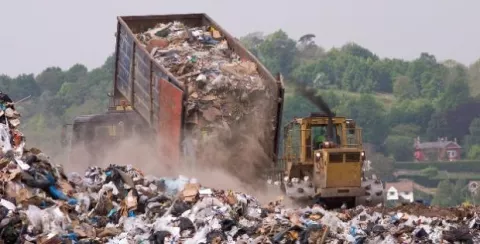
We celebrate the Swedes for many reasons. They invented the pacemaker, the flat screen monitor, the zipper. And they know a lot about meatballs.
Sweden's latest claim to fame now comes in the waste management arena. Less than 1% of the country's garbage goes to landfills, according to the Swedish Institute. How exactly has the Scandinavian country become such a rock star in what’s sometimes called the zero waste movement? In part it’s because recycling and reuse regulations have been in place there since the 1970s in an early effort to protect the environment. But Sweden's network of incineration plants takes a large bite out of the rubbish pile, too.
Riotous recycling and reuse
The extent of Swedish recycling and reuse efforts today is impressive. For example:
- Swedish households dutifully separate their newspapers, plastic, metal, glass, electric appliances, light bulbs and batteries. Newspapers are then turned into paper mass, bottles are reused or melted into new items, plastic containers become plastic raw material.
- In many municipalities, food waste is removed, then composted and turned into soil or biogas.
- Special trucks roam cities and pick up electronics and hazardous waste.
- Businesses that produce goods must handling all costs related to collection and recycling or disposal of their products. A beverage company must pay for bottle collection and related recycling or disposal costs.
Finally, Swedes can haul their larger debris, such as old mattresses and broken furniture, to conveniently located recycling centers.
Incinerating the rest
Yet that’s only half the story. While recycling makes a big dent in the garbage stream, Sweden also burns about as much waste as it recycles. Its 32 waste-to-energy (WTE) plants are what keep landfill deposits next to nothing, incinerating almost 2 million tons of filtered garbage. These incineration systems not only eliminate garbage, they also generate steam used to produce electricity that’s distributed across the country. Council Associate Partners ABB and Siemens have been key suppliers for some of these WTE plants.
Sweden, in fact, has become so good at burning trash that it looks to annually import 700,000 tons of garbage from the UK, Italy, Norway and Ireland to feed its incinerators.
“Waste today is a commodity in a different way than it has been. It’s not only waste, it’s a business,” says Swedish Waste Management communications director Anna-Carin Gripwell in a Care2 article.
While more than 40% of the world’s trash is burned, mostly in open air, incineration is controversial. Environmental critics claim that burning garbage releases heavy metal emissions into the air.
Sweden largely sidesteps this problem by using an advanced, low-emission process in its WTE systems. That greatly reduces airborne pollutants.The Swedish institute reports that heavy metal emissions from plants have been reduced by 99% since 1985, even though Sweden emits three times more waste today,
San Francisco wants zero waste by 2020
Some believe the high cost to build low-emissions plants -- plus the environmental concern around incineration -- makes it difficult for other cities and regions to follow Sweden’s lead. But that hasn’t deterred the zero waste quest in San Francisco.
The California city has eliminated 80% of all waste that isn’t recycled or composted, with the objective of producing zero waste by 2020. Rejecting incineration, the city is pushing mandatory composting, compulsory debris recycling, banning plastic bags and plastic bottles, and mandatory recycling for all its residents.
While San Francisco stands out from the pack, U.S. cities overall are sending less debris to landfills these days. The EPA reports that municipal solid waste trucked to a landfill has decreased from 89% of the amount generated in 1980 to under 54% of amount created in 2012. However, the EPA figures also show that the overall recycling rate for municipal solid waste in the U.S. fell from 34.7% in 2011 to 34.5% in 2012.
More on waste management...



